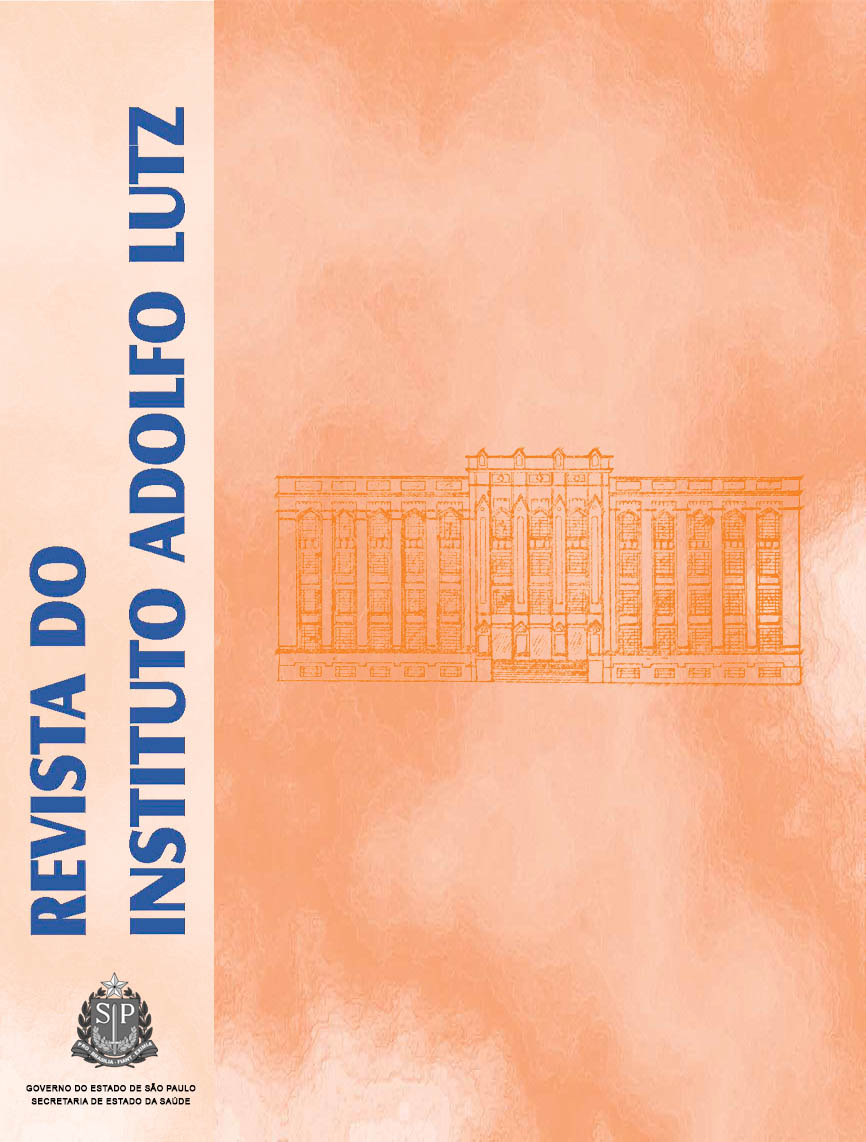Abstract
Different doses of gamma-irradiation effect was verified for inactivating aflatoxigenic strain, and on aflatoxin B1 production by Aspergillus flavus IMI 190443 in peanut, Tatu Vermelho variety, 2001/2002 and 2002/2003 crops. Two tests were performed in all samples: in one of them they were firstly irradiated before being inoculated, and in another assay peanuts were inoculated with aflatoxigenic strain before being irradiated. After irradiation, Aspergillus flavus IMI 190443 destruction was observed by the percentage of fungi infection by means of direct plating technique. Aflatoxin B1 was extracted with a mixture of methanol and 4% potassium chloride (270 + 30, v/v), followed by clarification with 10% cupric sulfate and partition with chloroform. Quantification was done by thin layer chromatography, measuring the samples fluorescent areas and of standard samples in densitometer (366 nm). Previously irradiated peanuts inoculated with aflatoxigenic strain, induced the production of high levels of aflatoxin B1. The data of the present study showed that 25 and 30 kGy gamma irradiation doses were necessary to get a complete inactivation of Aspergillus flavus IMI 190443.References
1. Aziz NH, Youssef BM. Inactivation of naturally occurring ofmycotoxins in some egyptian foods and agricultural commodities bygamma irradiation. Egypt J Food Sci 2002; 30: 167-77.
2. Pepeljnjak S, Slobodnjak Z, Segvic M, Peraica M, Pavlovic M. Theability of fungal isolates from human lung aspergilloma to producemycotoxins. Human Exper Toxicol 2004; 23: 15-9.
3. Council for Agricultural Science and Technology [CAST]. Mycotoxins:Economics andHealth Risks. Ames, Iowa: Council for AgriculturalScience and Tecnology. Task Force Report 139, 2003.
4. Moss MO. Mycotoxins. Mycol Res1996;100: 513-23.
5. Wild CP, Hall AJ. Primary prevention of hepatocellular in developing countries. MutatRes 2000; 462: 381-93.
6. Oliveira MS, Prado G, Abrantes FM, Santos LG, Veloso T. Incidênciade aflatoxinas, desoxinivalenol e zearalenona em produtos comercializados em cidades do estado de Minas Gerais no período de1998 - 2000. Rev Inst Adolfo Lutz 2002; 61: 1-6.
7. Rodriguez-Amaya DB, Sabino M. Mycotoxin research in Brazil: Thelast decade in review. Braz J Microbiol 2002; 33: 1-14.
8. Sabino M, Rodriguez-Amaya DB. Mycotoxin research in Brazil. Ciênc Cult 1993; 45: 359-71.
9. Aziz NH, Attia ESA, Farag SA. Effect of gamma-irradiation on thenatural occurrence of Fusarium mycotoxins in wheat, flour and bread.Nahrung 1997; 41: 41-7.
10. Aziz NH, El-Zeany AS, Moussa AA. Influence of ³-irradiation andmaize lipids on the production of aflatoxin B1 by Aspergillus flavus.Nahrung 2002; 46: 327-31.
11. Chiou RYY, Lin CM, Shyu SL. Property characterization of peanut kernelssubjected to gamma irradiation and its effect on the outgrowth and aflatoxinproduction by Aspergillus parasiticus. J Food Sci 1990; 55: 210-3.
12. Farag RS, Rashed MM, Hussein AA, Abo-Hagar A. Effect of gammairradiation on the infected yellow corn and peanuts by Aspergillusflavus. Chem Mikrob Tecnol Lebensm 1995; 17: 93-8.
13. Brasil. (Agência Nacional de Vigilância Sanitária). Resolução n0 21, de 26 de janeiro de 2001. Aprova o regulamento para irradiação de alimentos. Publicada no Diário Oficial da União de 29 de janeiro de 2001.
14. Pitt JI, Hocking AD. Methods for isolation, enumeration andidentification. In: Fungi and food spoilage. 2nd ed. Gaithersburg: AspenPub. Inc; 1999. p. 21-57.
15. Valente Soares LM, Rodriguez-Amaya DB. Survey of aflatoxins,ochratoxins A, zearalenone, and sterigmatoystin in some brazilianfoods by using multi-toxin thin-layer chromatographic method. JAssoc Off Anal Chem 1989; 72: 22-5.
16. Gimeno A. Thin layer chromatographic determination of aflatoxins,ochratoxins, sterigmatocystin, zearalenone, citrinin, T-2 toxin,diacetoxyscirpenol, penicillic acid, patulin and penitrem A. J AssocOff Anal Chem 1979; 62: 579-85.
17. Association of Official Analytical Chemists. Official Methods of theAOAC International. 16a edição. 3a revisão. Gaithersburg: AOACInternational, 1997.
18. Sampaio MBI. Estatística aplicada à experimentação animal.1a edição,Belo Horizonte: Fundação de Ensino e Pesquisa em Medicina Veterináriae Zootecnia; 1998. 221p.
19. SAS Institute. Users guide: statistics. 1989-1996. Version 6.11. Systemfor Windows. Edition. Cary North Carolina; 1996.
20. Hassan AA, Aziz NH. Influence of moisture content and storage temperature on the production of aflatoxin by Aspergillus flavus EA-81 in maize after exposure to gamma radiation. J Food Saf 1998; 18:159-71.
21. Chelack WS, Borsa J, Marquardt RR, Frohlich AA. Role of thecompetitive microbial flora in the radiation-induced enhancement ofochratoxin production by Aspergillus alutaceus var. alutaceus NRRL3174. Appl Environ Microbiol 1991; 57: 2492-6.
22. Schindler AF, Abadie NA, Simpson RE. Enhanced aflatoxin productionby Aspergillus flavus and Aspergillus parasiticus after gamma irradiationof the spore inoculum. J Food Prot 1980; 43: 7-9
23. Farkas J. Microbiological safety of irradiated foods. Int J Food Microbiol 1989; 9: 1-15.

This work is licensed under a Creative Commons Attribution 4.0 International License.
Copyright (c) 2005 Instituto Adolfo Lutz Journal
